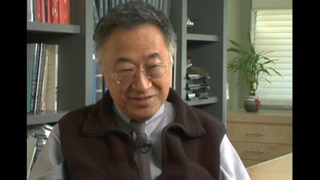Interviews
Playing a racist game with other children
The fact is, when we got out of camp and we went back to Seattle, one of our favorite games to play was Kill the Jap. And right next to our back porch there was a sort of a play area. My dad had a lot of scrap lumber and we would rearrange that lumber to create these sort of shelters that we sort of treated as shelters that would protect us from bombs that the Japs dropped on us. And of course we would always argue about who the Jap was gonna be, because none of us wanted to be the Jap. We all wanted to be John Wayne, you know, because John Wayne was the biggest Jap killer. And so I actually have a photograph of that, of all of us playing war and having, you know, helmets and guns and all that kind of stuff, and taking turns being the Jap.
Date: March 18 & 20, 2003
Location: Washington, US
Interviewer: Alice Ito and Mayumi Tsutakawa
Contributed by: Denshō: The Japanese American Legacy Project.




